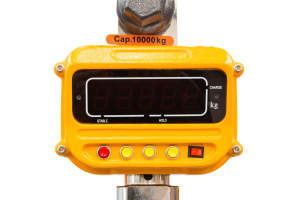
An indicator, in terms of scales, is the digital readout that is displayed when an item is weighed. Imagine you’re at the grocery weighing out produce for tonight’s dinner. When you place the item on the scale, the indicator tells you how much the item weighs, as well as the price point per pound, and often the total price for the produce you’ve selected. The indicator is not only quick and convenient, but also gives an accurate readout of the weight which removes some of the guess work you get when looking at the hash marks of a standard mechanical scale. But how does the indicator work?
Scale indicators and transducers are the key to modern digital scales. The transducer measures the total mechanical energy (the weight or pressure) which is then converted to electric current. The current passes from the transducer through a microchip that has been programmed to measure the energy and convert into useful data. In terms of a digital scale, pounds and ounces or grams and kilograms, depending on which side of the pond you’re coming from. The indicator works in tandem with the transducer and the overall result is an accurate measure.
This technological duo sees more use than just weighing out your broccoli. Indicators can be set to display several different types of data, current, power, voltage, temperature, vibration, frequency, can all be programmed into an indicator readout. While this doesn’t have as much practical application in the grocery store, it’s beyond useful when it comes to industrial settings. When it comes to manufacturing, this data proves invaluable when it comes to creating a quality product for your customers, especially when working with sensitive electronics, stress testing, or QA weight checks.
When it comes to measurements, weight or otherwise, it’s all about a careful balance. All it takes is a simple miscalibration between the transducer and the scale to render the indicator readout totally useless. These types of mistakes can be costly on both a small and large scale applications, resulting in overcharging a customer in the store, to wasted materials in a manufacturing setting. If you’re dealing with any sort of measurement or scale, it’s important to have them professionally installed, calibrated and maintained. Garber Metrology is not only ISO (International Organization of Standardization) certified, but also has the experience necessary to make sure your scales are in working order. With in house calibrations, professional service and installations and access to some of the most advanced technology on the market, Garber Metrology has what you need to keep your business in perfect balance.